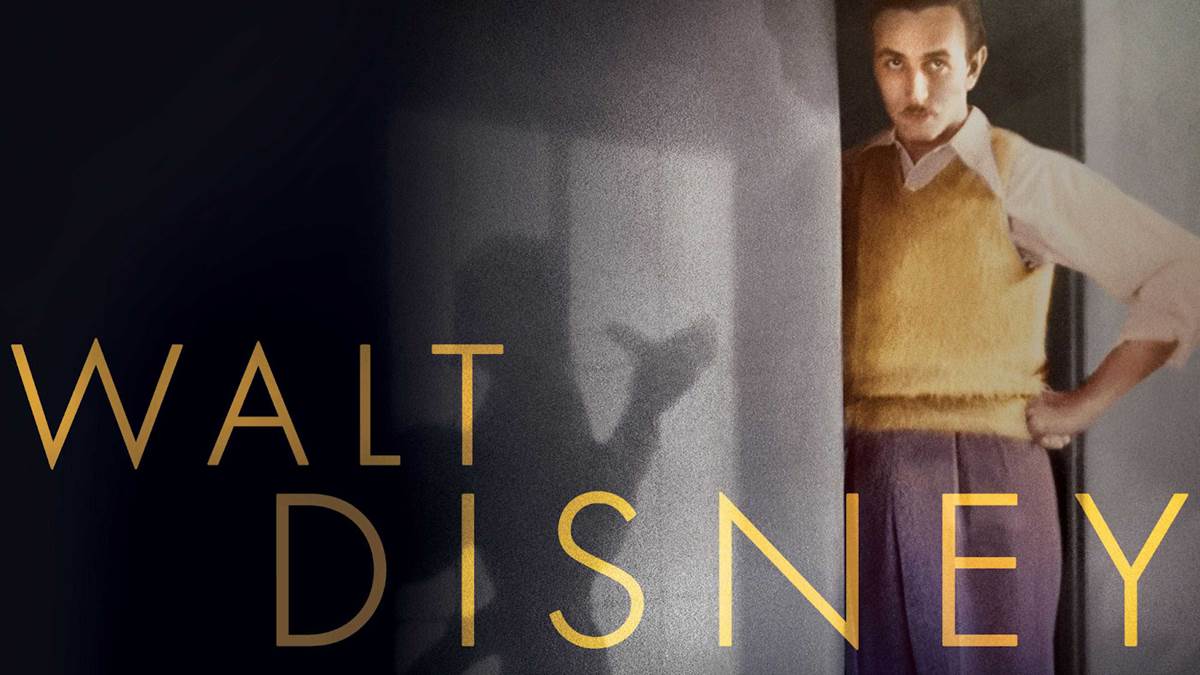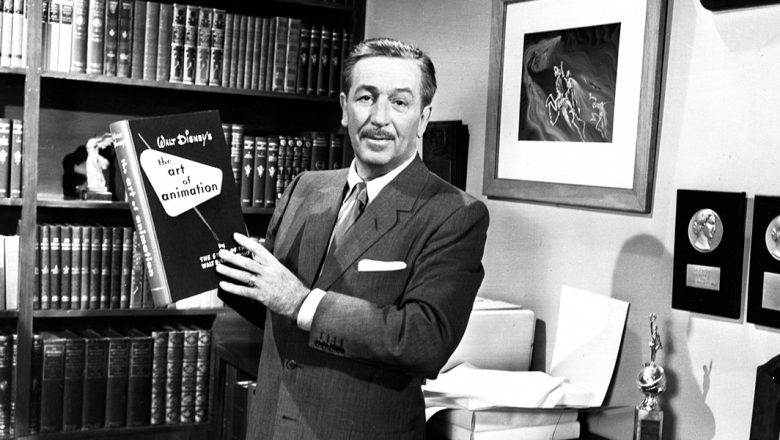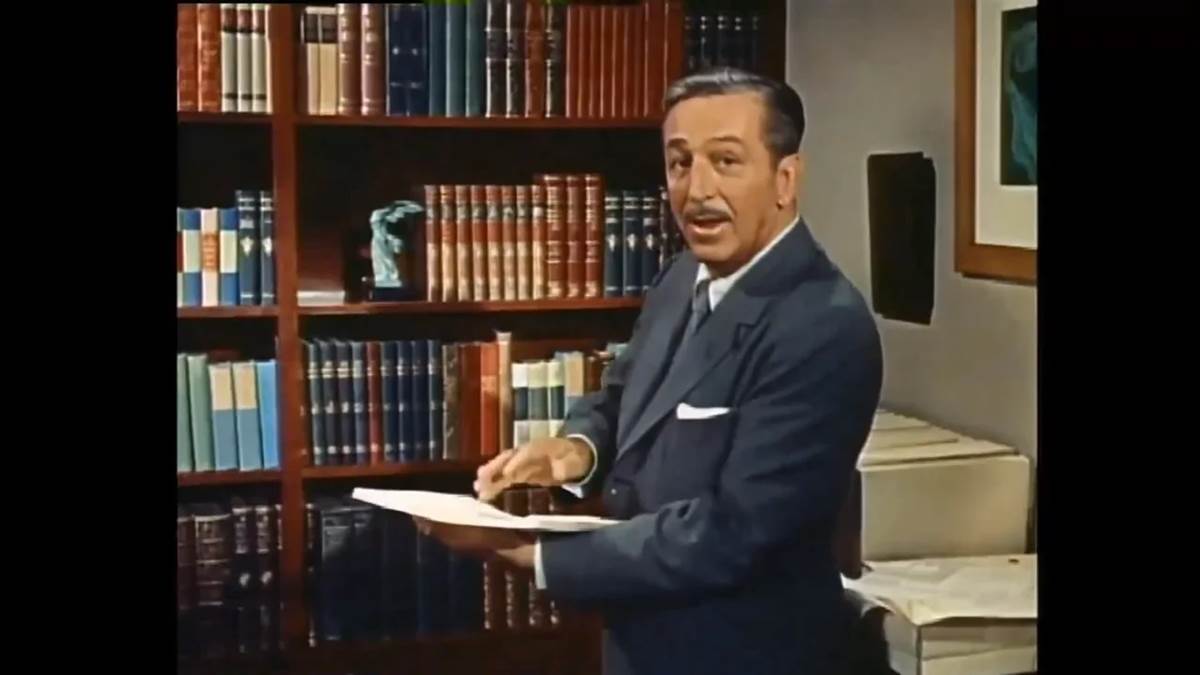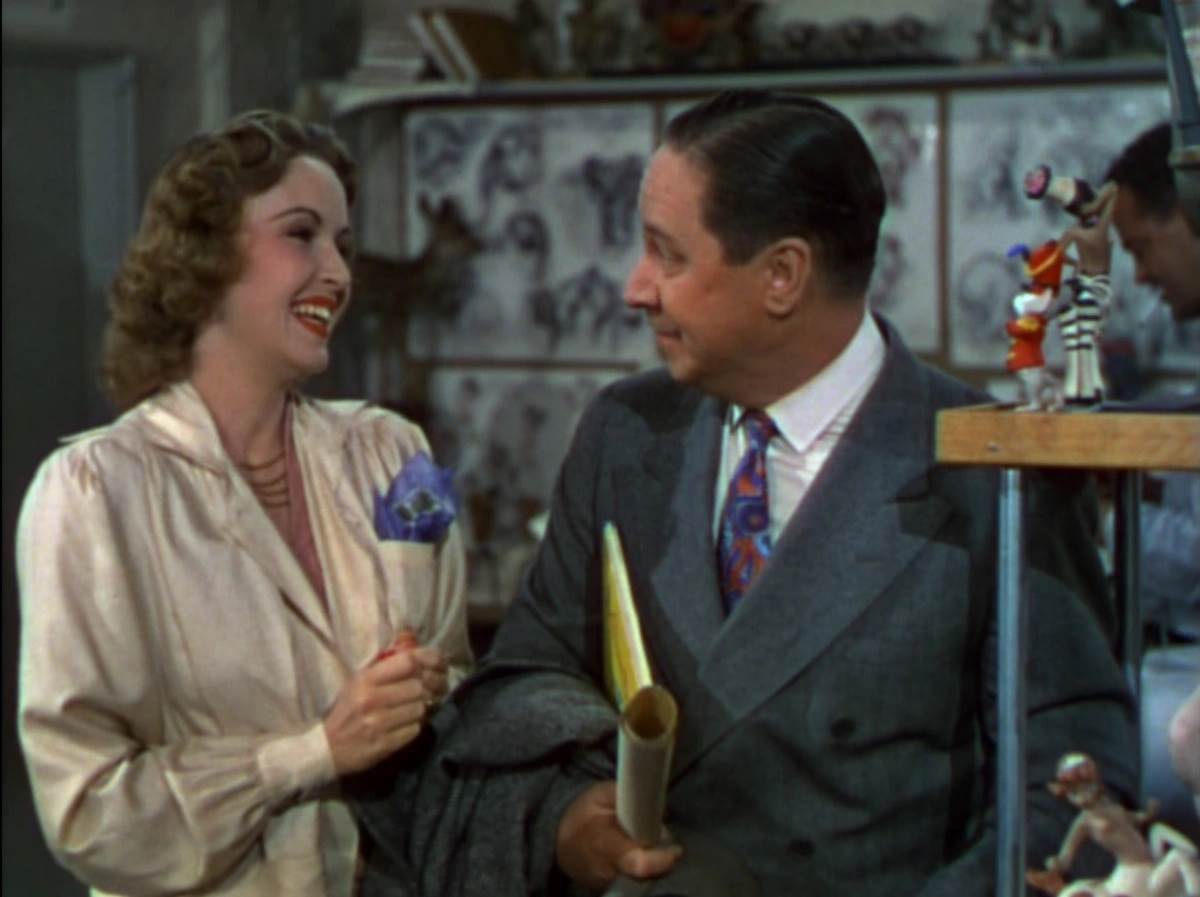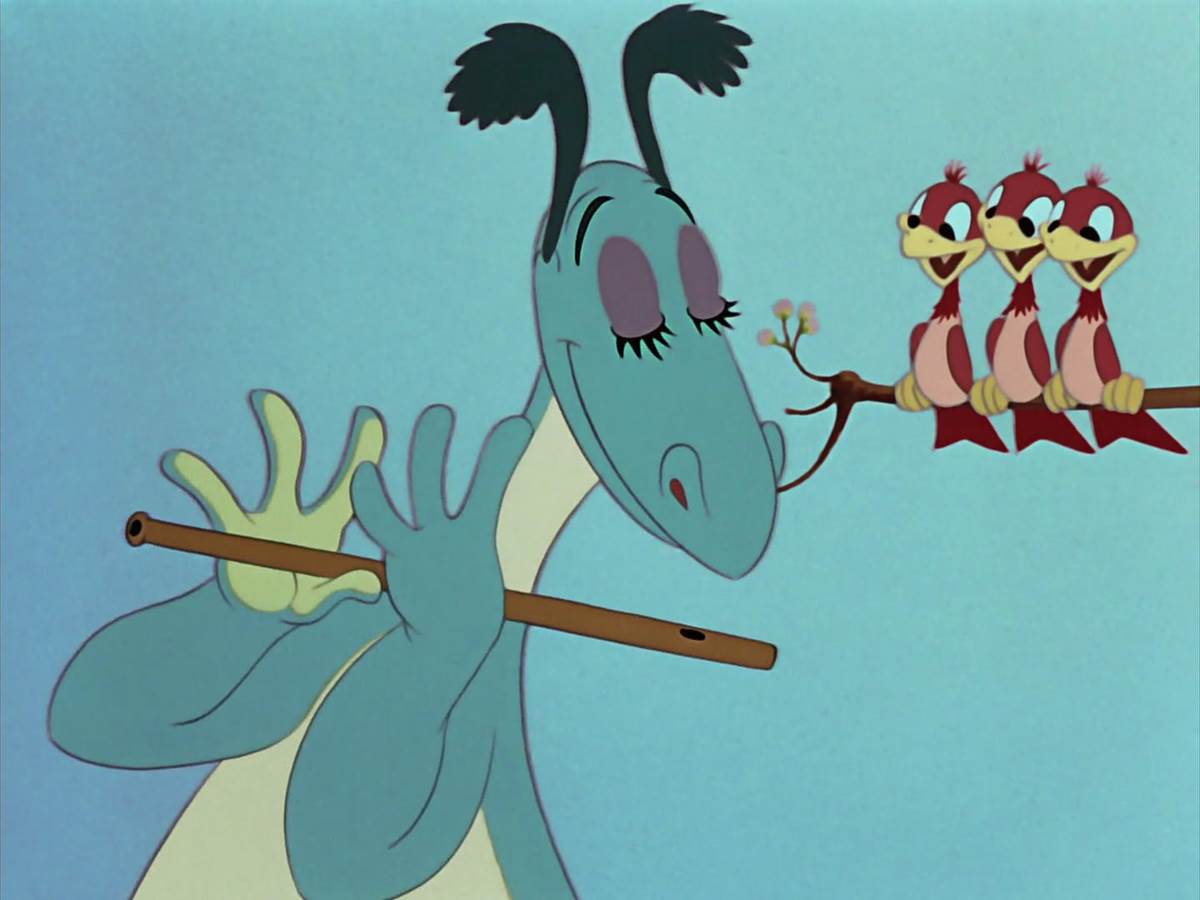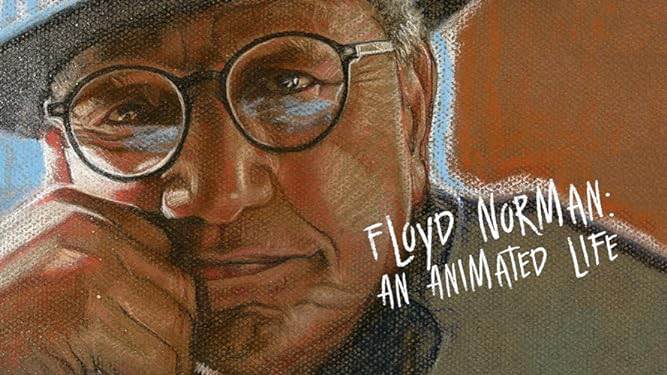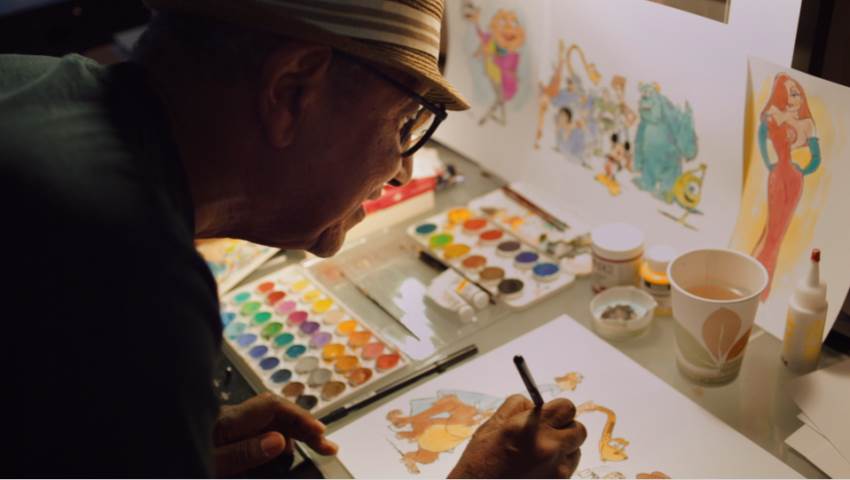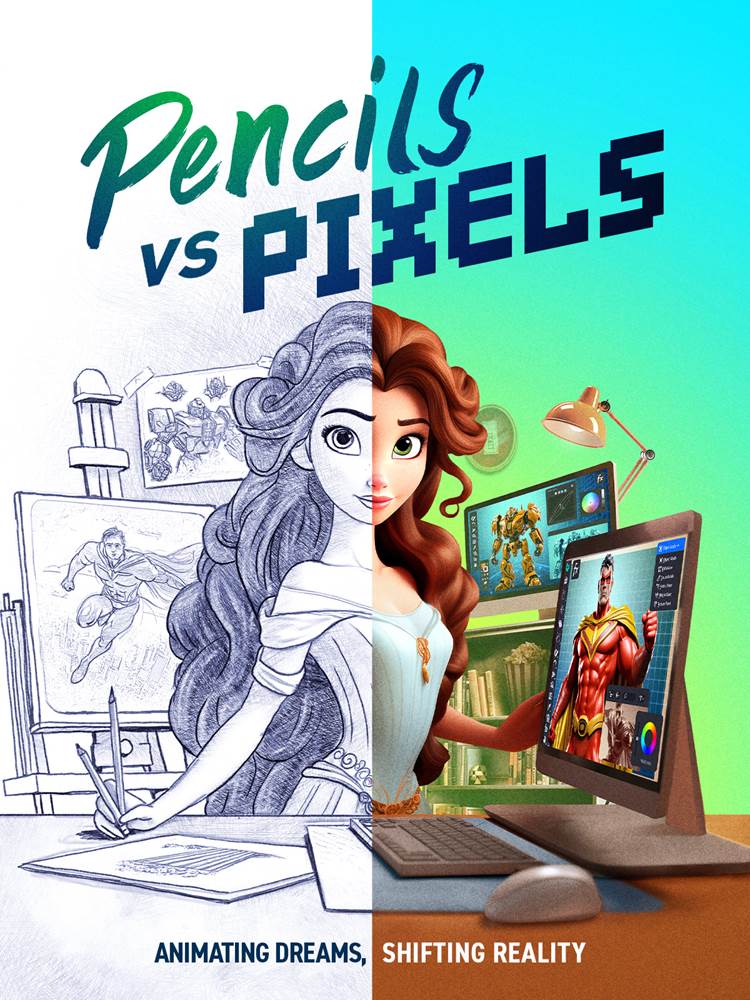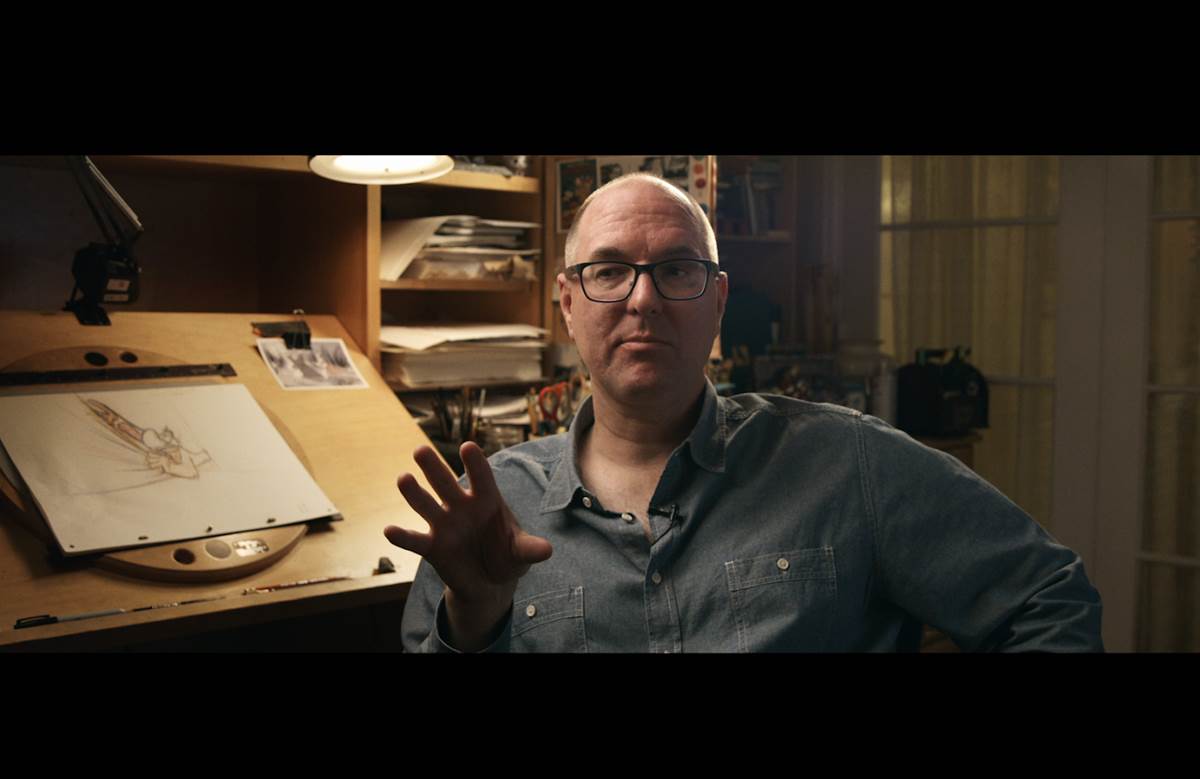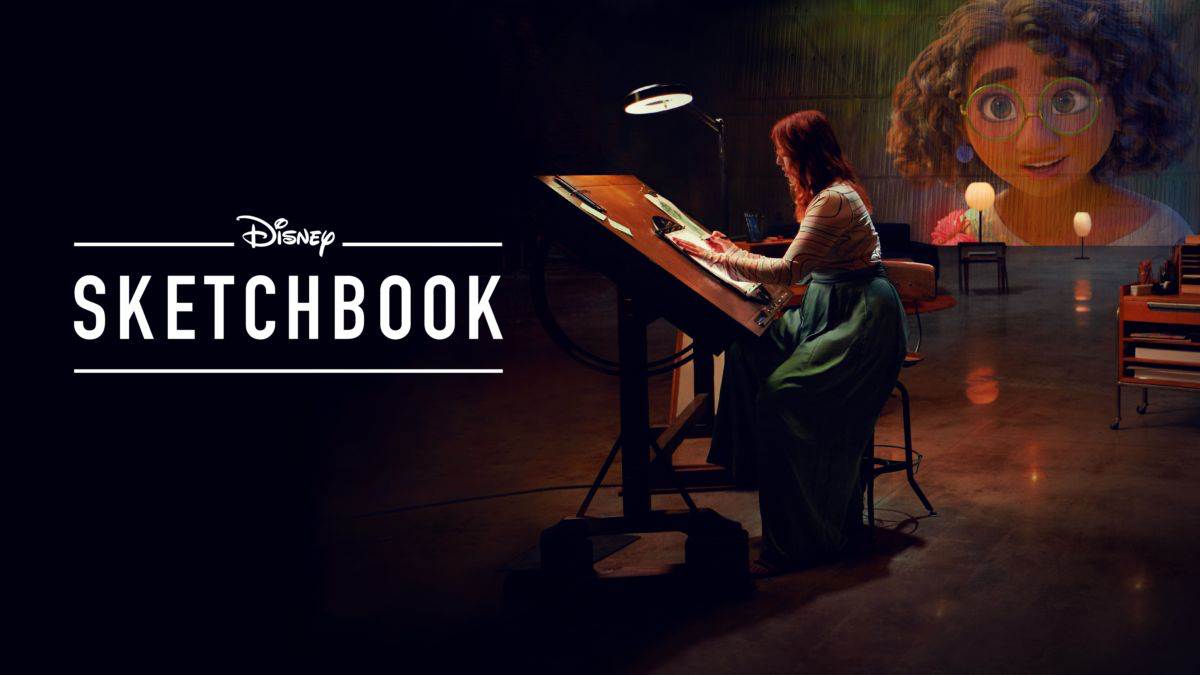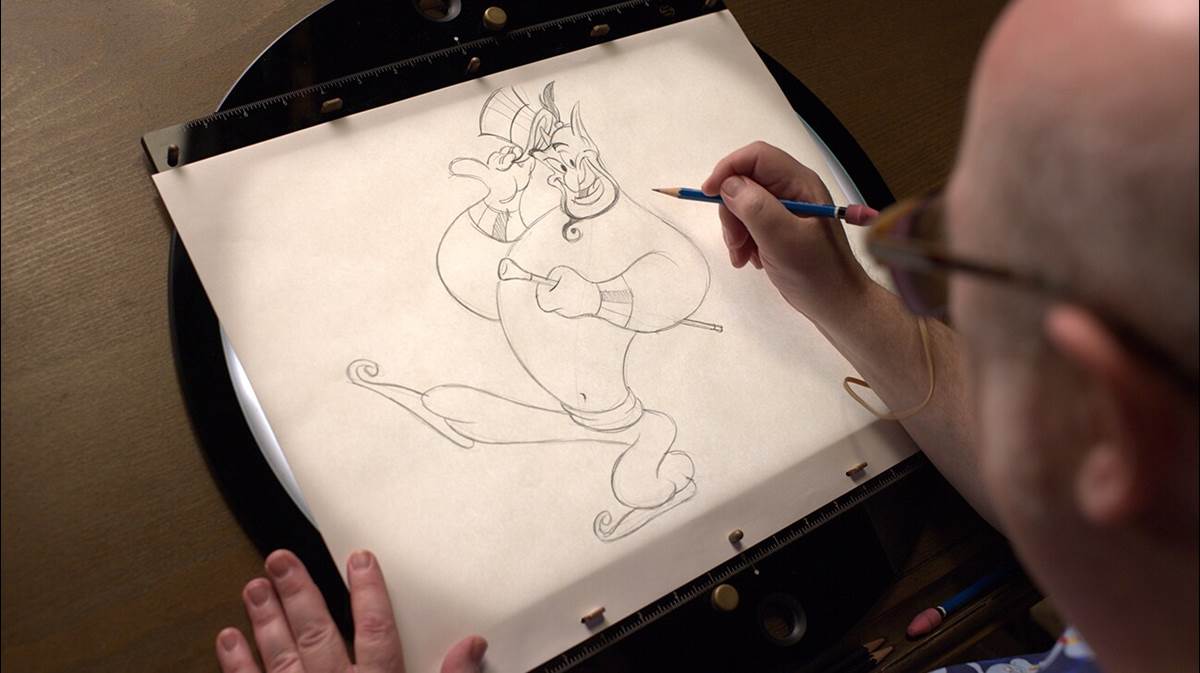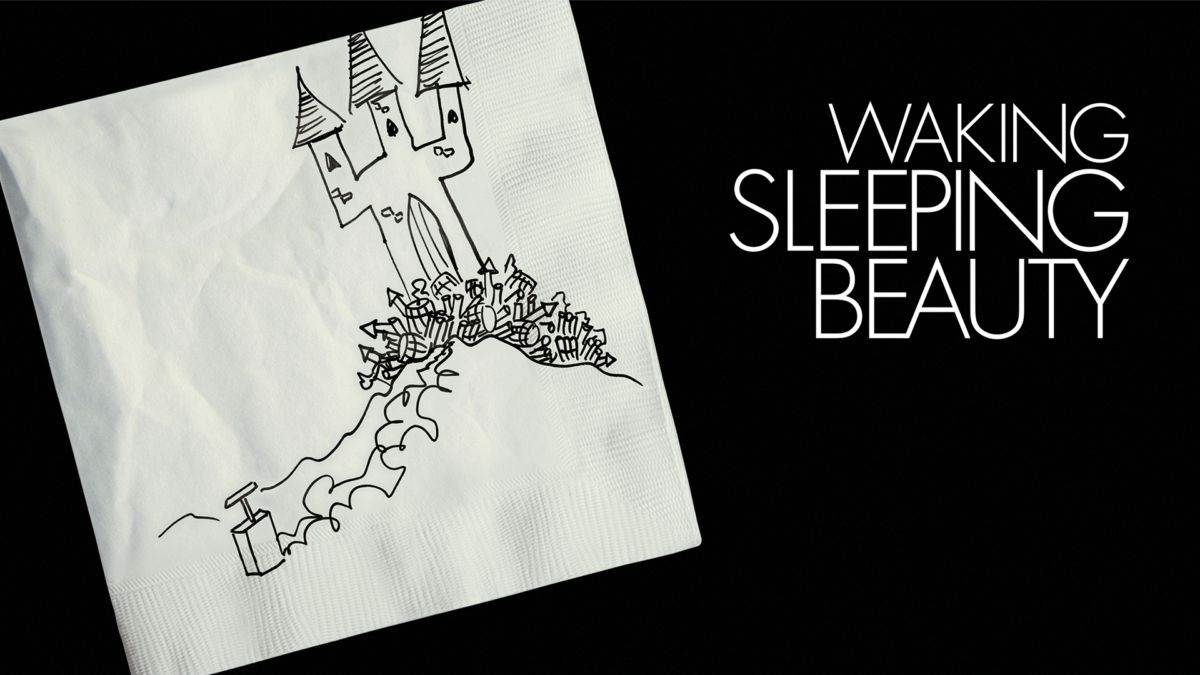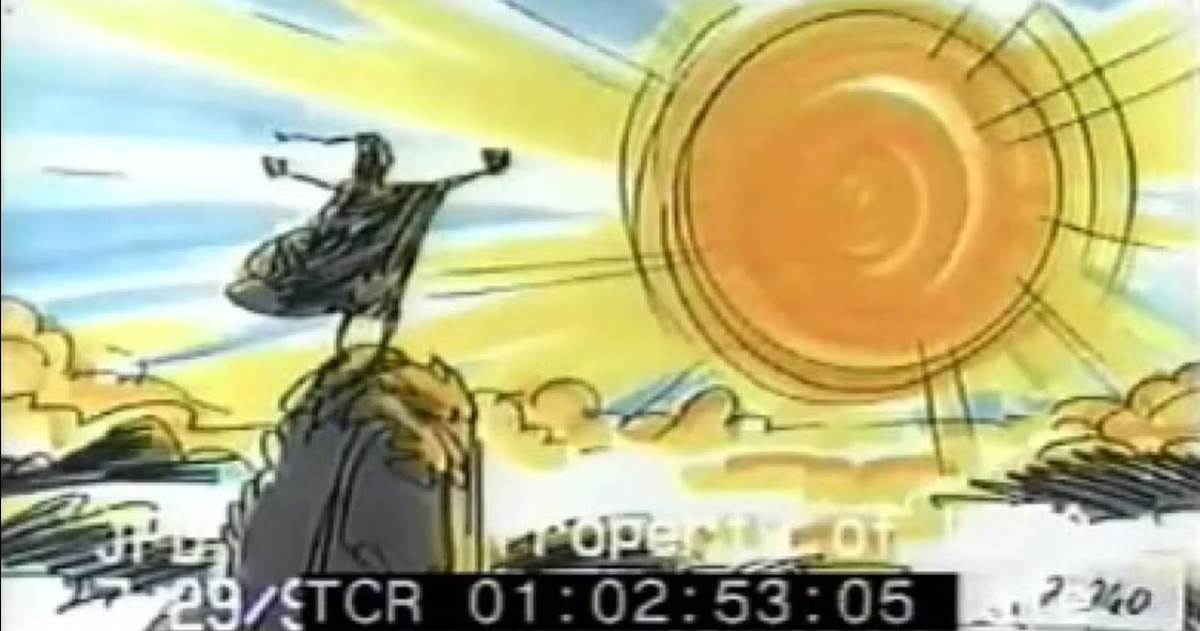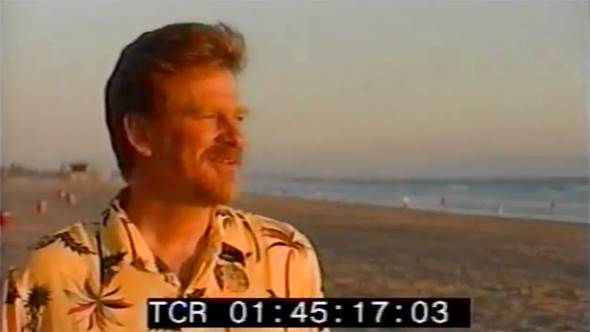As we continue our celebration of 100 years of Disney Animation, I decided to venture off course slightly and go something that is more Walt Disney Animation Studios-adjacent. The artform is a beautiful one, and in lieu of celebrating all the content the studio has put out even more than we already have, I thought I’d take a look at the content that focuses on the studio and its contributions to the artform. So let’s dive in and take a look at documentaries and television specials that focus on the art and the artists at the Walt Disney Animation Studios.
American Experience: Walt Disney
What better way to start this list than by sharing a documentary focused on the man himself, Walt Disney. While there are great options out there, including Disney’s own “Walt: The Man Behind the Myth,” none go more in depth than the PBS doc, American Experience: Walt Disney. Clocking in at four hours in length (originally airing as two parts), no stone is left unturned as we watch Walt’s life unfold. Everything from his childhood and war service, all the way through Mary Poppins and the Florida Project is covered.
As such, we get a closer look at many points in the studio’s early history that other docs won’t mention or walk on tissue paper with. This includes the creation of Mickey Mouse with Ub Iwerks and the drama of Charles Mintz stealing all his animators. We also get into the animation strikes and Walt’s time with HUAC. All while still celebrating his daring risks creating films like Snow White and the Seven Dwarfs, Fantasia, and more. Each milestone is mentioned, from Steamboat Willie’s synchronized sound and Flowers and Trees’ color, to the use of the multiplane camera on The Old Mill and the art of the craft being implemented in Disney’s World War II efforts.
At four hours in length it might sound exhausting to some, but is told so well by the time you finish it you won’t even realize how much time has passed.
The whole thing explores all of Walt Disney's complex life and his legacy but is told with a lot of rare archival footage from the Disney vaults, interviews with biographers and historians, as well as the animators and designers who helped turn all of his dreams into reality. Viewers might find themselves inspired to chase their own dreams, or take it as a cautionary tale about what happens when you get a bit too ambitious.
Originally aired on PBS in 2017, the full episode of American Experience can be found via PBS or on physical media releases.
The Story of the Animated Drawing / The Plausible Impossible
There are two episodes of the classic Disneyland television series that focus on the topic of animation and its history and the studio’s efforts in the artform. In 1955, audiences were introduced to The Story of the Animated Drawing, which celebrated the history of the artform including other animators and their studios, including Pat Sullivan, who is known mostly for creating Felix The Cat. From there, we jump into more of Disney’s milestones, including Steamboat Willie, Silly Symphonies, Snow White and the Seven Dwarfs and Fantasia.
Notably, the whole special is hosted by Walt Disney himself, who pulls context from a prop book titled “The Art of Animation.” As the legend goes, the book did not actually exist, but letters and correspondence flooded the studio asking where they could get a copy, thus leading to the book’s creation by author Bob Thomas – which many modern animators credit as their inspiration for chasing their own animation dreams.
As for The Plausible Impossible, which aired on Disneyland the following year, it is much the same (right down to the use of the prop book), but forgoes mention of other notable cartoonists, and focuses more on the history of the artform and its many devices. Special new sequences were also created, showing off early animation types among the egyptians and the greeks, and even a dragon or two. From there, we get more Mickey (Thru the Mirror) and Donald (Donald’s Cousin Gus), as well as a cut scene from Snow White and the Seven Dwarfs and the “Night on Bald Mountain” sequence from Fantasia. This episode is notable for a bit more synergy than the prior entry, but the special sequences celebrating the origins of the artform are fantastic, and there is a certain charm to hearing Walt Disney himself explain the different “scopes and tropes” of animation, including the phenakistoscope and the thaumatrope. Both of these episodes exist on Disney+, and The Plausible Impossible can be found on the Walt Disney Treasures: Behind the Scenes at Walt Disney Studio DVD set, along with our next entry….
The Reluctant Dragon
Audiences of the early era were truly fascinated by the art of animation and in 1941, Disney set out to show how it’s done in a step-by-step manner that would stay largely the same throughout the studio’s history. After the success of Snow White and the Seven Dwarfs, Walt built a new studio with the profits which is still the main Walt Disney Studio Lot in Burbank today. The Reluctant Dragon serves as a sort of tour of that new studio and going through each of the phases of making an animated film at the studio.
Actor and Comedian Robert Benchley is taken through the studio, encountering many animators and staff who are playing themselves, including Ward Kimball, Fred Moore, Clarence Nash, and Walt Disney himself. The film, itself a live-action tour, boils down to the making of another short film, The Reluctant Dragon.
However, viewers also see production on other titles, including storyboards for Baby Weems, a sequence with Casey Jr. from Dumbo, and How to Ride a Horse with Goofy. Viewers are introduced to concepts like foley artists and their sound effects creations, maquette sculpting so artists can view their characters from all angles, and the storyboarding and animation departments. Eventually, Benchley ends up in a screening room with Walt himself, where they watch (along with the viewers) the full short of The Reluctant Dragon.
Despite the audience’s fascination with the artform though, the film received a bit of mixed reviews back in the day when it was released. Not only because it was released during that aforementioned animator’s strike, but because it wasn’t a fully animated film like Disney’s earlier fare.
Now, fans can watch the original on multiple physical media releases, or they can catch it streaming on Disney+.
Floyd Norman: An Animated Life
There are a number of documentaries that focus on individual artists, and while several come to mind, including the also recommended Frank & Ollie, the real standout is the biographical documentary of artist Floyd Norman in Floyd Norman: An Animated Life. The 2016 film explores the history and legacy of its main subject, the first Black artist hired at Walt Disney Animation Studios back in 1956.
Norman worked on such classics as Sleeping Beauty, 101 Dalmatians, Mary Poppins and more, before being selected by Walt Disney himself to serve on the story team for The Jungle Book, after his previous storyman was sticking too close to the source material and making the film a bit too dry. Norman was a gag man.
His storied career took him from Disney, to Hanna-Barbera, and Pixar, with many adventures in filmmaking and animation in-between.
The film goes a step further than others and depicts Floyd’s story while also showing original animations created from his own hand-drawn gag drawings. And since Floyd is still with us, cameras are able to follow him throughout a day, including a visit to Disney’s campus. While Norman was ushered by Disney into retirement at age 65, he is still active and you can see him contributing work to other areas, including books. A who’s who of names is also featured in the documentary, including appearances by Leonard Maltin and Whoopi Goldberg.
The film originally debuted on Netflix, and had some showings on Turner Classic Movies. You can find it now on physical media releases, or currently streaming on the Criterion Channel app.
Pencils Vs. Pixels
The newest documentary on this list – so new it’s not even widely available yet (but coming soon!) – chronicles the period in the late 90s and early 2000s when the focus on 2D animation shifted into that of 3D computer animated films after the success of Pixar’s Toy Story and Dreamworks’ Shrek. Narrated by Ming-Na Wen, voice of Mulan, we are told a very candid look at the rise of the computer by classically trained animators who were there to witness all of it. Coming off the height and excitement of the Disney Renaissance, and that of the medium as a whole, the artists celebrate traditional 2D animation before getting into the computer animation era.
While the documentary doesn’t devote itself exclusively to the Walt Disney Animation Studios, that studio was at the center of the rise of the computer, hand in hand with Pixar Animation Studios, so it’s more of a natural occurrence through the narrative, and there is a strong focus on the Walt Disney Animation Studios throughout. Taking place during the animation renaissance, this does focus on the rise of the computer, not the complex situations taking place at Walt Disney Feature Animation at the time. For that, the doc even goes out of it’s way to mention another title which I’ll discuss shortly…
The doc also features recognizable talent like Tom and Tony Bancroft, Seth MacFarlane, Alex Hirsch, Glen Keane, Pete Docter, John Musker and more, and given the film’s independent nature, they all give a refreshingly candid take on the era that isn’t under the watchful eye of any major studio’s media team. I was fortunate enough to catch the film after its premiere at this year’s Annecy Festival in Europe, and you can find out more about it in my review here.
Sketchbook
A wonderful kind of series, Sketchbook feels like the Comedians in Cars Getting Coffee of Disney Animation. Individual animators share their own personal stories while showing viewers how to draw some favorite characters. As each animator sketches, they share their personal stories about how they became artists at the studio. Some sharing tragedies and triumphs, others just sharing their love of the artform.
The footage, interestingly edited, not only allows fans to follow along and learn helpful drawing tips, but is scored by soft jazz and calming music while the artists share their story, making it extra relaxing to sit back and simply enjoy the pencils gliding along the paper.
Legendary artists like Eric Goldberg and Mark Henn are featured alongside newer artists who worked on Encanto and more recent fare. How do you sketch a CG character? Don’t worry, they’ll show you. My biggest complaint about the series is that there are only 6 half-hour episodes. With so many artists and characters, you’d think they’d be cranking new episodes out each quarter, but alas. Over a year after its debut, we’re still waiting on more. Fortunately, despite a slash of original content from the streamer, those six episodes are still available to watch now on Disney+.
Waking Sleeping Beauty
Produced and Narrated by Disney Legend Don Hahn, who assembles a team of animators and executives as support, shares the story of the near shuttering of the iconic Disney Animation Studios after The Black Cauldron, following along with the rise and rebirth of the medium with what would come to be known as the Disney Renaissance. Don’t expect this just to be a celebration of The Little Mermaid, Beauty and the Beast, Aladdin, and The Lion King. Yes, those are mentioned but serve merely as timestamps as the doc focuses on the behind the scenes relationships between Michael Eisner, Roy E. Disney, Jeffrey Katzenberg, and their mediator, Frank Wells. Interviews and stories from the animators at the studio and their leadership from the period, like Peter Schneider and Frank Wells, are anchored by archival footage and home movies taken at the studio.
The home videos are exciting to watch, especially in hindsight, as they roam through the studios spotting feature household names like Tim Burton and John Lasseter. Animation fans will also easily recognize many of the other artists spotted in the footage, many of which return to provide commentary throughout the film.
The film is a little one-sided – after all, a film about tumultuous happenings at the Disney Studio released by the Disney Studio is sure to be in some sense, but is still a fantastic chronicle of the actual happenings at the studio at the time. Aside from tempered relationships between executives, the film also shows the cultural impact of their massive releases, as well as some of the more bombastic box-office failures in the late 80s. While the content, through a typed description, sounds a little less than thrilling – “Executives fighting and jealous of each other, no thanks!” – The content is presented in a witty and charming way. One highlight mentions a fake memo poking fun at a marketing decision to rename “Basil of Baker Street” into The Great Mouse Detective and the tale of how it made it into a category on Jeopardy! Complete with clips from the actual episode of Jeopardy!
There is also a focus on some of the other key players of the era, notably Howard Ashman, the lyricist who provided his skills (along with composer Alan Menken) to The Little Mermaid, Beauty and the Beast and early drafts of Aladdin before his passing in the 90s. His life was later chronicled, again by Producer Don Hahn, in the documentary, Howard, which is also a great watch for Disney Animation fans, and can be found along with Waking Sleeping Beauty on Disney+.
If you have not seen this yet, I can not recommend it enough, and it is easily my favorite thing I’ve included on this list. Though Waking Sleeping Beauty can be found on Disney+, I highly suggest finding it on DVD or Blu-Ray if you want a deeper dive, as the bonus features feature those aforementioned home movies without all the crafty documentary snipping and edits. They also have tributes to four of the key players in the film who passed away before the film’s release – Howard Ashman, Roy E. Disney, Frank Wells, and Joe Ranft.
Honorary Mention: The Sweatbox
I’m not supposed to mention this. In fact, I’m looking over my shoulders with a dose of paranoia for even typing out the title, but there is a documentary you likely have never even heard of, let alone seen. Shortly after the success of The Lion King, co-director Roger Allers was given the task of helming his own production – one that would be focused on the Incas and would tell a Prince and the Pauper-esque story in an epic and musical fashion. That film would be titled Kingdom of the Sun. For the music for that film, Allers and his producer, Randy Fullmer, would get a little help from Sting. Allegedly, as part of that deal, Sting’s wife, Trudy Styler, was granted access to film the entire process for a documentary showing how an animated film is made.
What Styler ended up capturing was a chronicle of probably the most troublesome production in the studio’s history. With a crew that was excited to work on a story that featured a sorceress named Yzma and her ability to summon shadow demons to block the sun and retain her youth, while a selfish emperor switches places with a llama herder who falls in love with his betrothed, it was a disastrous screening in the screening room (or “the sweatbox”) that led to the film being reworked, rewritten, and much of Sting’s music left on the cutting room floor.
Styler beautifully captures the heartbreak of much of the crew, including Allers, who was assigned a co-director in Mark Dindal before he eventually dropped out of the film, as it becomes The Emperor’s New Groove. The first third or so of the movie feels like any other bonus feature or making-of for an animated film, until that screening that changes everything. From there, you get the harrowing tale of this potential masterpiece collapsing and becoming one of Disney’s more unique catalog entries.
As for the doc itself it is so embarrassingly truthful that Disney (who as part of the deal, retained distribution rights to the film) had to approve a version of the film that received a worldwide premiere at the Toronto Film Festival, and unpublicized runs in theaters in Los Angeles to qualify for awards nominations. The film was also reportedly shown at a theater in Orlando – which had a large number of animators from Disney’s Florida Animation Studio in attendance who expressed their disapproval of the executive leadership featured on screen.
Eventually, Disney took the film and edited it down to a short feature on the DVD release of the film, Making the Music Video, which used the footage with Sting and the song, “My Funny Friend and Me.” Snippets are also featured more as B roll in other bonus features on the disc.
The film, in its completed form, would be relegated to shelves in an archive somewhere, locked away forever….or would it? In 2012, the unedited film appeared online where it spread throughout animation communities. And as we know, once something shows up on the internet, it will most likely live somewhere forever…so if you’re interested…maybe just look for it? (wink wink)
Regardless of backstory, The Sweatbox is a remarkably truthful look at the process of making an animated film at the Walt Disney Animation Studios in the 90s and early 00s, and can be very enlightening about the production process, or quite sickening at times – meeting deadlines for the sake of McDonald’s Happy Meal contracts and their toy pitch is an example of the latter that is shown. And No. No you cannot find this on Disney+.

